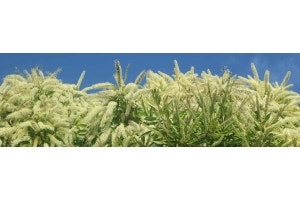

Plants & Light - the lowdown
This week we see the Winter Solstice - the time of year when daylight hours are at their shortest (and nights are longest and chilliest - are you needing an extra blanket too?)We're not in the Arctic Circle, where Winter Solstice means the sun won't come over the horizon for several weeks - but the reduction in daylight does have an effect on our plants. Before the invention of electricity, which led onto early morning wake-up alarms, eight-hour screen sessions, and all-night drive-thrus, we humans lived in harmony with the rhythms of the earth. When the sun rose, we rose. When the sun went to bed, so did we.Plants' Bedtimes
 Australian winter days are comparatively long - 8 to 11 hours of daylight - and plants will keep on growing if weather conditions are favourable.
What you will see, if you keep note of the daylight hours, is a change in flowering schedules.
Some plants care how much intensity of light they can get each day and, for them, a few hours of strong sun is as good as a full day of dappled shade.
Then there are plants which will only flower once they reach a certain age. Vegetables like tomatoes and capsicum fall into this type.
Australian winter days are comparatively long - 8 to 11 hours of daylight - and plants will keep on growing if weather conditions are favourable.
What you will see, if you keep note of the daylight hours, is a change in flowering schedules.
Some plants care how much intensity of light they can get each day and, for them, a few hours of strong sun is as good as a full day of dappled shade.
Then there are plants which will only flower once they reach a certain age. Vegetables like tomatoes and capsicum fall into this type.
For some plants it is important how long they have daylight for, not how intense it is. Often non-equatorial plants - plants that don't grow around the equator - are sensitive to the amount of daylight, and require changes in that to trigger bud development. It's called "photo-periodism". Several herbs only start to flower once days get shorter, telling the plant that the summer will soon be over and they'd better start making seed. Other kinds of plants respond to longer days, shorter nights, more daylight - which is why many plants start to flower in spring.
Short Day Plants
 Some plants need the reverse - shorter days, longer nights, and more darkness - to trigger flowering, just like some people need longer sleeps to function at their peak.
These Short Day plants are popular decorative items for autumn and winter events, when days are shorter.
Chrysanthemum and Poinsettias are Short Day plants, and the red and white poinsettia bushes are in bloom in subtropical gardens around our nursery right now, as winter days have become shorter.
Some plants need the reverse - shorter days, longer nights, and more darkness - to trigger flowering, just like some people need longer sleeps to function at their peak.
These Short Day plants are popular decorative items for autumn and winter events, when days are shorter.
Chrysanthemum and Poinsettias are Short Day plants, and the red and white poinsettia bushes are in bloom in subtropical gardens around our nursery right now, as winter days have become shorter.
December is the month when tropical potted poinsettias are in huge demand, to brighten up Northern hemisphere homes at Christmas. Commercial poinsettia growers around the world use blackout curtains and complex lighting programs to ensure that their potted plants get enough 'sleep' during the long-day summer months there, to produce those bright red bracts in perfect time for the Christmas market. Not enough darkness? No red poinsettias!
 It's a complicated and challenging process to grow short day plants out of their natural daylight seasons.
Another plant that needs its beauty sleep in order to flower is the Christmas cactus (Schlumbergera) - so-called because it traditionally flowers at Christmas (midwinter) in the northern hemisphere.
These are popular indoor plants, and very long-lived. If they are in a brightly-lit room that also has the lights on in the evening, they may not produce their buds as expected.
Find somewhere darker where it can rest for at least 12 hours a day, and it will reward you with masses of satiny bright blooms throughout the winter months.
It's a complicated and challenging process to grow short day plants out of their natural daylight seasons.
Another plant that needs its beauty sleep in order to flower is the Christmas cactus (Schlumbergera) - so-called because it traditionally flowers at Christmas (midwinter) in the northern hemisphere.
These are popular indoor plants, and very long-lived. If they are in a brightly-lit room that also has the lights on in the evening, they may not produce their buds as expected.
Find somewhere darker where it can rest for at least 12 hours a day, and it will reward you with masses of satiny bright blooms throughout the winter months.

















